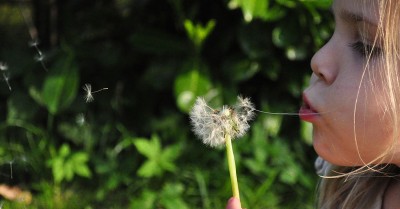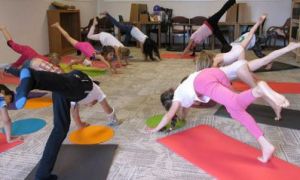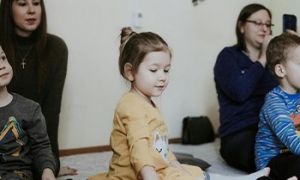Over centuries, Nature has been represented by artists, poets and philosophers as the ideal setting for learning about humanity and the universe. Indeed they may have been onto something as everyday there is more evidence about how experiences with nature promote learning.
Here are a few ways educators can facilitate learning with Nature.
Sensory Learning
Amidst Nature, children learn to use all the senses while classroom learning rarely goes beyond sight and sound. Sensory learning is hugely useful as engagement with multiple senses help to build nerve connections in the brain’s pathways, leading to better cognitive skills in later life. Paying with mud can be both creative and relaxing; kids may find digging and squelching their fingers in the silky texture oddly soothing. There is also evidence2 from research that children are innately attracted to visual fractal shapes found in Nature like, leaves, clouds and outlines of hills. Some of the ways you can use Nature for sensory learning are:
- Planning a sensory scavenger hunt that uses sounds, movement, colours, smells and taste
- Walking through the woods to explore textures like smooth, rough, grainy, dry, squishy, prickly and soft
- Showing the difference between flowers with attractive colours and sweet smells and then explaining why
Better Health
Out on a nature hike or climbing trees, there are more chances of children stretching, jumping, raising their arms up high and turning their heads in all directions - in other words, a wider variety of gross motor skills than they are using in the classroom. Similarly as they pick up a coloured stone or stroke a ladybird, they are using their fine motor skills as well. These coupled with the benefits of breathing oxygen-rich air confer some very real health benefits on learning with Nature.
Nurture Curiosity
Observation is essential to nurture a scientific disposition. You can use nature walks or a trip to the zoo to nurture your learners’ observation skills. For example you might point out that:
- Caterpillar has many more legs than a spider
- Different plants have different shapes of leaves
- Cacti have fleshy leaves and spiky needles
- Giraffes have long necks and lions are tan-coloured
Once you have got the children sufficiently interested, use the observations to ask and invite questions related to science, numeracy, geography and so on. For example: The spikes on a cactus can be used to talk about evaporation and deserts while the lions and giraffes can open up conversations on adaptability and evolution.
Benefits of Unstructured Experiences
Interaction with Nature are rarely predictable. As children look under logs or rocks, they experience the joys of surprise findings and learn that birds, animals and other creatures have agency as well - at times, they might appear and at others, they might not wish to be seen. At the same time, children discover new aspects of their own selves – things in Nature they are drawn to, not interested in or wary of.
Nature offers opportunities for ranging beyond the familiar which in turn helps children to face fears, gain confidence or ask for adult help, when needed. Above all, learning with Nature helps children to be aware of pertinent issues like climate change, ecological balance and the environment, all of which are needed in the citizens of the future.
References:
Do Experiences With Nature Promote Learning?, Frontiers In Psychology



 As an Educator in Australia, your pay rate falls under the Children’s Services Award 2010. This award states the minimum amount that an employer can
As an Educator in Australia, your pay rate falls under the Children’s Services Award 2010. This award states the minimum amount that an employer can When working as a qualified Early Childhood Teacher (with a university degree) within a service, your rate of pay will come from the Educational Services
When working as a qualified Early Childhood Teacher (with a university degree) within a service, your rate of pay will come from the Educational Services When working as a Diploma Qualified Educator your pay rate is from the Children's Services Award 2010. This Award states your minimum rate of pay
When working as a Diploma Qualified Educator your pay rate is from the Children's Services Award 2010. This Award states your minimum rate of pay When working as a Cert 3 Qualified Educator, your pay rate is from the Children's Services Award 2010. This Award states your minimum rate of
When working as a Cert 3 Qualified Educator, your pay rate is from the Children's Services Award 2010. This Award states your minimum rate of Educational Leaders play a crucial role in their early childhood service by ensuring that the educational program aligns with best practices and supports the holistic
Educational Leaders play a crucial role in their early childhood service by ensuring that the educational program aligns with best practices and supports the holistic In early childhood education and care, ratios are more than a technicality—they are a frontline safeguard. Every child deserves responsive supervision, emotional connection, and developmental
In early childhood education and care, ratios are more than a technicality—they are a frontline safeguard. Every child deserves responsive supervision, emotional connection, and developmental Here’s a comprehensive Mobile Phone and Smart Watch Policy tailored for early childhood education and care (ECEC) services in Australia, aligned with the latest 2025
Here’s a comprehensive Mobile Phone and Smart Watch Policy tailored for early childhood education and care (ECEC) services in Australia, aligned with the latest 2025 With the new national child safety reforms kicking in on 1 September 2025, early childhood services like yours have a real opportunity to lead the
With the new national child safety reforms kicking in on 1 September 2025, early childhood services like yours have a real opportunity to lead the The Sea of Fish Challenge is a national initiative that invites children, educators, families, and communities to create and display fish artworks as a symbol
The Sea of Fish Challenge is a national initiative that invites children, educators, families, and communities to create and display fish artworks as a symbol Across the early childhood education and care sector, educators are sounding the alarm: current staffing ratios are insufficient to deliver safe, meaningful, and developmentally appropriate
Across the early childhood education and care sector, educators are sounding the alarm: current staffing ratios are insufficient to deliver safe, meaningful, and developmentally appropriate


